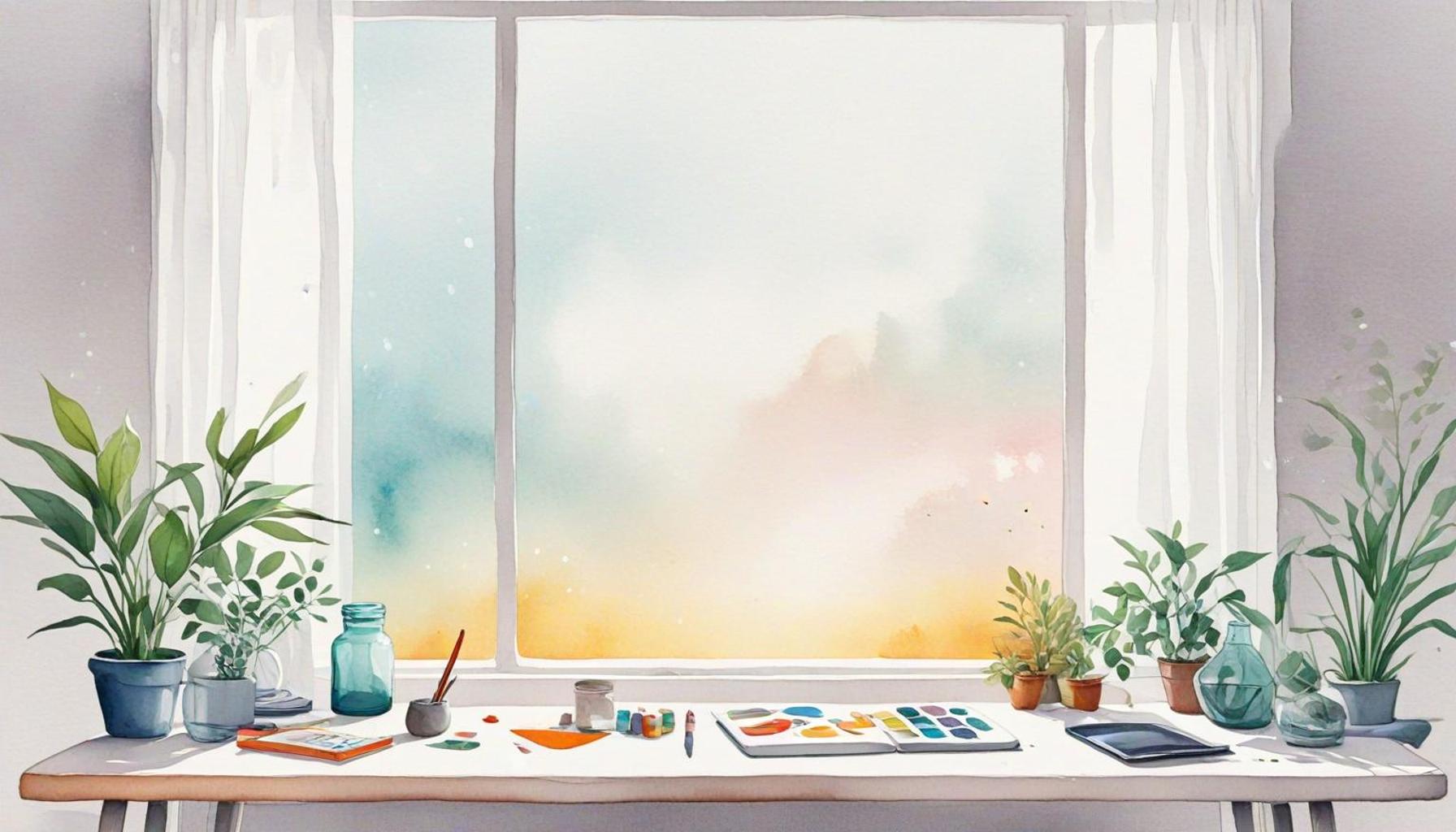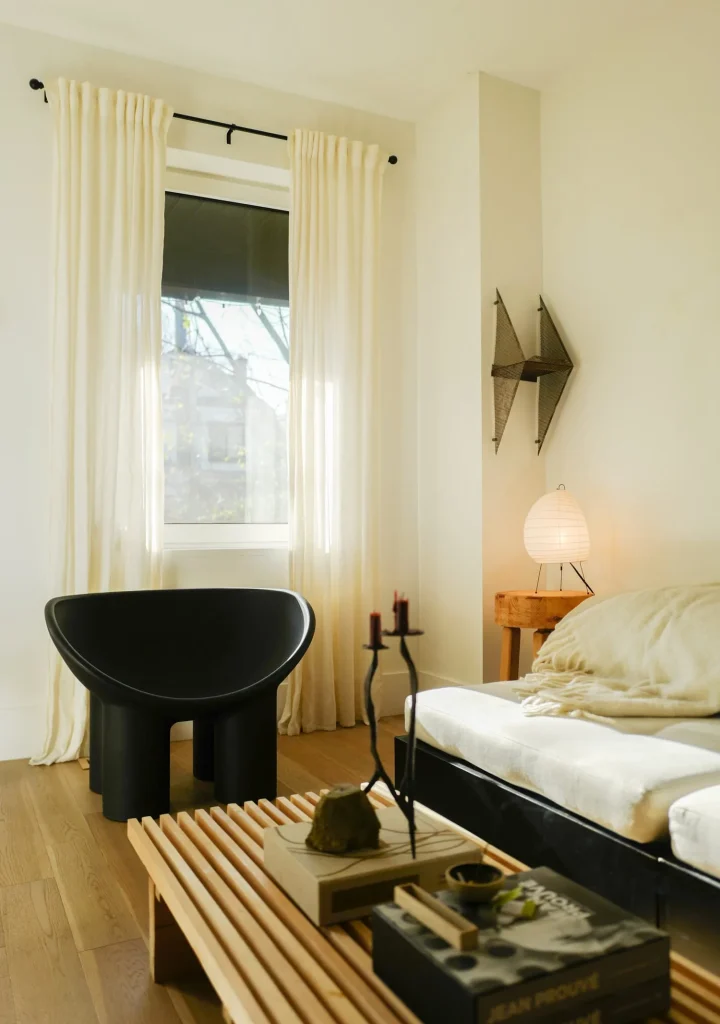Calm Spaces: Creating Mindful Environments with Minimalist Organization Principles

Creating Harmony in Your Environment
In today’s fast-paced world, the need for calm spaces has become increasingly critical. Mindful environments can significantly enhance our well-being, offering a sanctuary from daily chaos. By incorporating minimalist organization principles, we can transform our surroundings into serene, functional spaces. These spaces not only invite peace but also encourage productivity and creativity, making them essential in both homes and workplaces.
The Power of Minimalism
Minimalism is not merely about decluttering; it embodies a lifestyle choice centered around simplicity and tranquility. Key features of this approach include:
- Reduced clutter: Fewer items lead to less distraction, allowing individuals to focus better on tasks. For example, a clean desk devoid of unnecessary items can increase concentration and efficiency.
- Intentional design: Each piece should serve a purpose or bring joy. This principle is famously encapsulated by Marie Kondo’s “spark joy” philosophy, encouraging individuals to connect emotionally with their belongings.
- Natural elements: Incorporating plants or natural light enhances mood and well-being. Studies have shown that environments enriched with greenery can reduce stress and improve air quality, making indoor spaces not only aesthetically pleasing but also healthier.
Creating Your Calm Space
Establishing your own mindful environment can be a rewarding journey. Start with these actionable tips:
- Evaluate your belongings: Keep only what matters. Consider organizing workshops, where you can learn to distinguish between necessity and excess, and even engage in community donation efforts.
- Optimize layouts: Arrange furniture to promote flow and ease. The principles of feng shui offer insightful guidance on spatial arrangement that fosters positive energy.
- Use calming color palettes: Soft, neutral shades can foster a peaceful atmosphere. Colors like light blue and soft green are often cited by interior designers as promoting relaxation and clarity.
Embracing minimalism not only eases mental clutter but also promotes a more mindful lifestyle. As you explore further, you’ll uncover ways to cultivate spaces that nurture tranquility and clarity. Consider visiting local art exhibits or nature trails to inspire designs and ideas for your space. Ultimately, the journey towards a harmonious environment fosters not just personal growth but also a deeper connection to the world around us.
DISCOVER MORE: Click here for transformative decluttering tips

Embracing the Minimalist Philosophy
To cultivate calm spaces, it’s essential to embrace the core tenets of minimalism. At its heart, minimalism encourages us to prioritize quality over quantity, leading to environments that are not only visually appealing but also deeply intentional. By simplifying our surroundings, we allow our minds to mirror this clarity, fostering a sense of peace that can permeate every aspect of our lives.
One of the primary aspects of this philosophy is the principle of living with less. This means engaging in a thoughtful evaluation of what truly adds value to our spaces. According to a study conducted by the Institute of Global Prosperity, home environments that reflect minimalistic principles are linked to lower stress levels and increased mental well-being. Here are key principles to consider when creating your calm space:
- Functionality over sentiment: When organizing a space, focus on items that serve practical purposes or evocate positive emotions. Consider what you use regularly and what merely occupies space, potentially implementing a 90/10 rule: maintain 90% functional items and allow only 10% for sentimental keepsakes.
- Design with intention: No object should be included in your space without a specific purpose. This means re-evaluating furniture choices and decor to ensure every piece contributes positively to the overall atmosphere. A carefully curated space often results in increased mindfulness and improved concentration.
- Create zones: Establish designated areas within your home or workspace for different activities, such as relaxation, work, and creativity. This thoughtful zoning can help minimize distractions and promote focus. For example, a reading nook piled high with books encourages quiet reflection, while a clean, organized desk enhances productivity.
By approaching your environment with these minimalist strategies, you can begin to transform space into a hub of tranquility. Cultivating such an atmosphere nurtures a deepened sense of mindfulness, helping individuals better navigate the stressors of everyday life.
Integrating Mindfulness Practices
In addition to physical organization, integrating mindfulness practices can greatly enhance the effects of a minimalist environment. Techniques such as meditation, yoga, or deep breathing exercises can provide essential tools for maintaining calmness amidst the potential chaos outside your serene space. Consider setting aside time each day to engage in these practices in your designated calm areas, reinforcing the connection between a focused mind and a peaceful environment. Regular exposure to such routines can shift how you perceive your daily surroundings, cultivating a robust sense of peace and presence.
| Advantages | Description |
|---|---|
| Reduced Stress | Minimalist organization creates a serene environment, promoting a sense of calm and reducing overwhelming feelings. |
| Enhanced Focus | In a calm space, distractions are minimized, leading to improved productivity and a clearer mind, essential for achieving goals. |
| Mindfulness Practice | Organizing and decluttering encourages a mindful approach to daily activities, enhancing overall well-being and perspective on life. |
| Improved Aesthetic | A visually pleasing environment nurtures creativity and a positive atmosphere, making spaces more enjoyable to inhabit. |
Creating calming spaces through minimalist organization principles does more than tidy up your environment; it fundamentally shifts your approach to everyday life. By embracing the art of reducing clutter, individuals find themselves stepping into a sanctuary that fosters clarity and peace. This approach not only enhances focus and productivity but also cultivates a more mindful and thoughtful lifestyle.Imagine entering a room where every object has its purpose, and every corner radiates tranquility. The benefits of such spaces extend into our emotional and mental health, offering a refuge from the chaos often found in modern living. Embarking on the journey to design your own calm space can lead to significant lifestyle changes, positively impacting everything from stress levels to the quality of daily interactions. In essence, mindful environments serve as a catalyst for cultivating a personalized oasis amid the busyness of life. Explore these principles further to discover how they can enrich your home and life.
DISCOVER MORE: Click here to transform your space
Enhancing Calm with Color and Light
Beyond organization and mindfulness techniques, the aesthetic elements of color and light play a pivotal role in shaping a calm environment. Scientific studies have shown that colors can significantly influence our mood and emotional state. For instance, soft blues and greens evoke feelings of tranquility and relaxation, making them ideal choices for bedrooms or meditation spaces. On the other hand, warmer colors, like soft yellows and earthy tones, can encourage a sense of warmth and comfort, suitable for living areas.
Natural light, too, is essential in cultivating calm spaces. Research indicates that exposure to natural sunlight fosters an increase in serotonin levels, improving mood and focus. When designing your space, consider maximizing natural light by using sheer curtains, strategically placing mirrors to reflect sunlight, or opting for lighter colors that enhance brightness. Additionally, implementing artificial lighting that mimics natural daylight can be beneficial during darker months or in spaces with limited windows.
Integrating Natural Elements
Bringing the outdoors inside is a powerful way to create a serene atmosphere. The concept of biophilic design suggests that a connection with nature can enhance well-being and reduce stress. This can be achieved through various means, such as incorporating house plants, natural wood textures, or stone elements. Certain plants not only purify the air but also create a sense of life and vibrancy within your space. For example, pothos and snake plants are low-maintenance options that thrive indoors and contribute positively to air quality.
In addition to greenery, consider using natural materials in your furnishings and decor. Items crafted from wood, stone, or bamboo can draw on the calming characteristics of nature, providing a tactile experience that adds depth to your environment. When selecting items, look for those made with sustainable practices to further enhance your commitment to a mindful lifestyle.
Establishing a Technology Detox Zone
In our hyper-connected world, creating a technology detox zone can greatly enhance the mindful aspects of your calm space. Designating areas free from digital devices and distractions allows for uninterrupted reflection and relaxation. This may include a meditation corner or a reading nook that is intentionally free from screens and notifications. Not only does this foster a space for self-care, but it also reinforces boundaries that prevent technology from encroaching on moments of tranquility.
Encouraging mindful interactions with technology can also be impactful. For example, if you must incorporate digital elements, use tools such as apps that promote mindfulness, or limit usage by setting specific time blocks for device engagement. This balance can help mitigate feelings of overwhelm while still allowing for the benefits that technology can provide when used intentionally.
DON’T MISS: Click here to discover how vertical storage can transform your space
Conclusion
Creating calm spaces involves much more than just tidying up. It encompasses a holistic approach that integrates minimalist organization principles, sensory elements, and intentional design choices to foster tranquility. As we’ve explored, the interplay of color and light can dramatically influence our emotional landscape. Meanwhile, incorporating natural elements not only bridges our home with the outdoors but also reinforces our innate connection to nature, which is crucial for mental well-being.
Moreover, establishing a technology detox zone enables us to prioritize mindfulness in our fast-paced, digital world. By intentionally curating our environments with fewer distractions, we create sanctuaries that promote relaxation and deeper self-awareness. As you embark on your journey to design a mindful space, remember that each decision—from the hues on your walls to the plants you choose to nurture—carries the potential to create a profound impact on your day-to-day life.
In essence, cultivating a calm space is an ever-evolving process, tailored to your unique needs and preferences. Embrace the journey of transformation, and consider how even the smallest adjustments can lead to significant improvements in your overall mental health and peace of mind. By prioritizing organization, aesthetics, and the serenity that comes from nature, you can create not just a peaceful environment, but a sanctuary for a more mindful existence.
Related posts:
Mindful Living and the Importance of Time: How Minimalism Can Help Prioritize What Really Matters
Mindful Living and the Art of Saying No: Setting Boundaries with a Minimalist Lifestyle
Mental Detox: The Impact of Mindful Living on Emotional and Spatial Organization
Deconstructing Excess: Mindful Living Practices for Efficient Personal Organization
Mindful Living and Stress Reduction: Minimalism Practices for a Fuller Life
Mindful Living in the Digital Era: Disconnecting for a Minimalist and Conscious Life

Linda Carter is a writer and organization expert specializing in minimalism and personal organization. With extensive experience helping individuals create clutter-free, functional spaces and adopt mindful habits, Linda shares her knowledge on our platform. Her goal is to empower readers with practical advice and strategies to simplify their lives, stay organized, and achieve a sense of calm and balance in their daily routines.